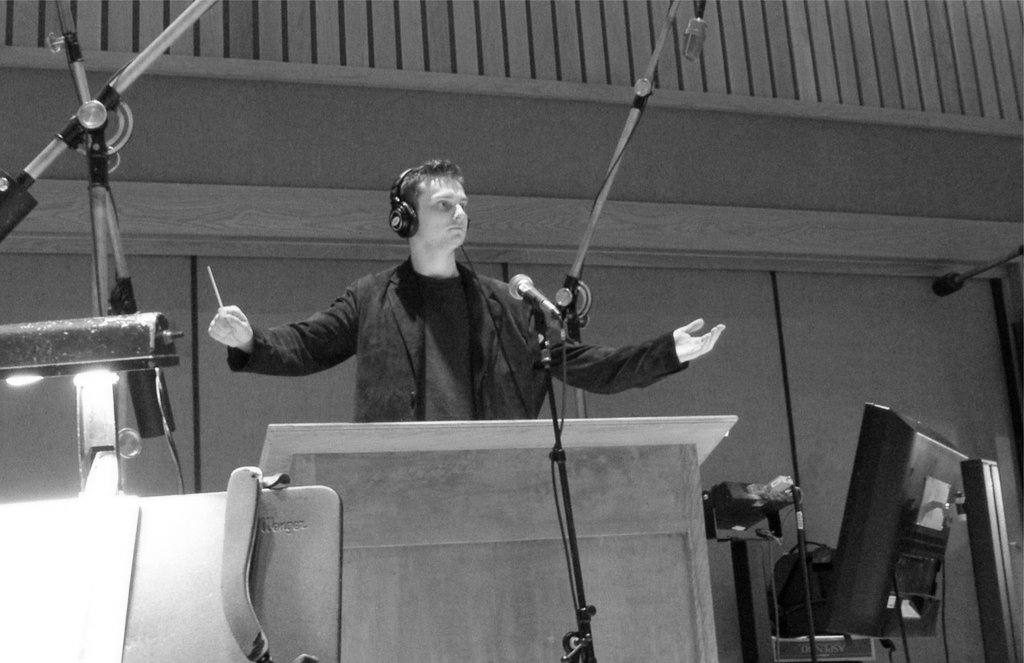We recently had the opportunity to sit down with renowned composer Kevon Cronin to discuss his latest film score for IFC Midnight’s horror/thriller, “Hunter Hunter.” Released just recently, this movie has been making waves in the horror community, and Cronin’s haunting score has played a vital role in creating an immersive and unsettling atmosphere.
The Intricate Dance of Volume in the Score
When asked about the process of determining the volume of the score, Cronin explained that the complexity and layering of elements within the music itself played a significant role. However, the final decision ultimately rested in the hands of the re-recording mixer, who expertly balanced the score with the visuals to achieve the desired effect.
Exploring Instrument Alternatives
One fascinating aspect of Cronin’s work for “Hunter Hunter” was his use of the cello. However, if director Shawn had not been satisfied with the cello’s contribution to the final result, Cronin shared that he would have relied more heavily on synthetic sounds and manipulated recordings. These elements would have captured the intended vibe had the cello not fit Shawn’s vision.
A Collaborative Process with Cellist Norm Adams
The collaborative process between Cronin and cellist Norm Adams was unique due to the constraints brought about by the pandemic. Despite living on the east coast of Canada, Adams remotely contributed to the score. Cronin worked closely with Adams, sharing his musical vision and specific techniques to realize the desired outcome.
A Remarkable Final Scene
Reflecting on his favorite scene in the film, Cronin highlighted the impact of the final scene without revealing any spoilers. He expressed how this particular scene left a lasting impression on him and assured audiences that they were in for a treat.
Marking Pivotal Moments with Music
Regarding the pivotal moment when Mersault discovers the gruesome image in the forest, Cronin emphasized the importance of marking this point musically. Through the utilization of cello techniques and other sound design elements, he aimed to intensify the audience’s realization of the sheer gruesomeness unfolding onscreen.
Intense Tension and Perilous Pursuit
Another sequence where the score played a significant role was during Anne’s frantic run with the water buckets while Renee faced a haunting terror in the woods. Cronin employed percussion instruments to enhance the growing tension, hinting at the presence of a menacing wolf pursuing Renee.
The Silence after the Storm
Interestingly, “Hunter Hunter” deliberately lacks any end credit music. Shawn, the director, believed it would be best to let the sounds of the woods envelop the audience’s senses, allowing them to reflect on the intensity and impact of the film they had just experienced.
Composing: Characters or Film First?
When it comes to his method of composing, Cronin shared that after watching the movie multiple times, he takes some personal time away from the studio to brainstorm. During this crucial stage, he generates ideas based on the characters, instrumentation, thematic elements, and even specific sounds that capture the essence of the film. Only then does he sit down and experiment against the visuals to see if his initial concepts successfully blend with the picture.
A Fondness for the Paranormal
While Cronin appreciates all horror films, he admits to having a particular affinity for paranormal horror. According to him, these movies offer a unique opportunity for the mind to delve into even darker and more mysterious places, allowing the imagination to wander.
Conclusion
Kevon Cronin’s work on the score for “Hunter Hunter” demonstrates his mastery of creating an eerie and immersive auditory experience. Through careful consideration of volume, instrument choices, collaboration with talented musicians, and marking pivotal moments in the film with music, Cronin’s composition adds richness and intensity to this thrilling horror movie.
Frequently Asked Questions
1. How long did it take to compose the score for “Hunter Hunter”?
The process of composing the score for “Hunter Hunter” took several months. Kevon Cronin dedicated significant time and effort to capture the essence of the film and create the perfect musical accompaniment.
2. Did Kevon Cronin face any challenges during the pandemic while working on the score?
Like many artists and professionals, Cronin faced challenges due to the restrictions imposed by the pandemic. However, through innovative approaches and remote collaboration, he navigated these obstacles and successfully crafted the haunting score for “Hunter Hunter.”
3. Are there any specific musical influences or inspirations that can be heard in the score?
The score for “Hunter Hunter” showcases Cronin’s unique musical style and expertise. While it does not draw directly from specific musical influences, it masterfully blends various techniques and elements to create an atmosphere that complements the film’s narrative and enhances the audience’s emotional experience.
4. How does music contribute to the horror genre as a whole?
Music plays a crucial role in the horror genre, elevating suspense, intensifying scares, and immersing the audience in the world created by the film. It heightens emotions, amplifies tension, and serves as a powerful tool for storytelling, adding an additional layer of fear and excitement to the overall cinematic experience.
5. Can we expect more collaborations between Kevon Cronin and director Shawn in the future?
While future collaborations are not yet confirmed, the successful partnership between Cronin and Shawn on “Hunter Hunter” undoubtedly showcases their ability to bring together their respective talents. Fans of their work can remain hopeful for more joint projects that push the boundaries of horror and suspense.

